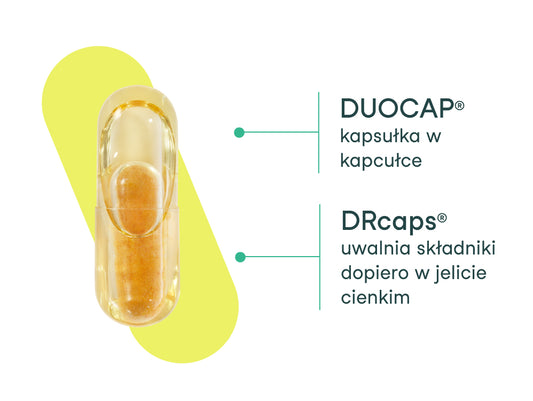
Known for thousands of years, essential oils have been used mainly as perfumes for several hundred years. However, they can also be helpful in skin diseases, mental disorders, and fighting dangerous bacteria and viruses. Learn how to use aromatherapy.
Celebrities, influencers, colleagues and just friends - more and more people use essential oils. Aromatherapy, although known from ancient times, is experiencing a real boom in the 21st century, when everyone is looking for a natural way to fight germs and improve their mood. However, many people think that fragrance oils are a type of perfume and are unaware of the power of these tiny "perfumes".
Is aromatherapy just a pleasant smell?
Aromatherapy is not only about inhaling essential oils, but also using them in many other ways. Oils affect the body not only through the sense of smell. The process is two-pronged:
- they influence the brain and emotional state through smell (you can read about this mechanism in a separate article )
- they work at the chemical level - molecules of essential oils penetrate the skin, bloodstream, organs and can, among others: kill bacteria, viruses, fungi, have expectorant and analgesic effects 1 .
Essential oils are sometimes referred to as "plant blood" 2. Natural ones are made from various parts - flowers, seeds, stems, roots, bark, needles, fruit peel, tree resin. Plants hide them in microscopic glands. For example, if we cut a stem or a leaf, they will escape. Just like when a person starts bleeding when he cuts his finger. In plants, oils perform similar functions. They "disinfect" the site of damage, kill bacteria, repair the site of damage, and regenerate tissues. They also have other tasks. They can, for example, repel pests and predators with their scent or attract pollinating insects.
What distinguishes essential oils used for aromatherapy?
First of all, their complicated chemical structure and properties. Each natural essential oil contains from several dozen to several hundred substances 3 . Most of them cannot be reproduced in the laboratory by scientists. 1 drop of such oil contains 40,000 times more molecules than cells in the entire human body. 4 .
Essential oils are fat-soluble, so they can, among others: penetrate the membranes of pathogen cells and destroy them 5 . They also easily get into the deeper layers of the skin, where other synthetic agents cannot reach 6 . Just one breath from the bottle of oil is enough for the aromatic particles to reach the blood vessels in the lungs and pass through the blood to other parts of our body. 7 .
Which is the best way to use aromatherapy and essential oils?
Europe has a very rich history of using fragrances to improve well-being and health. If we are talking about modern times, the French have gone the furthest in this regard . Since the 1930s, they have been actively using essential oils - orally, rectally, vaginally, through the skin and respiratory tract. The English approach, on the other hand, is primarily associated with the use of essential oils in massages and applying them in diluted form to the skin. There is also a "German school" that focuses on inhaling essential oils. This is the fastest way to deliver active substances to the bloodstream.
Each of these methods has its advantages and disadvantages, possibilities and limitations.It is best to choose the appropriate method depending on our needs and the specific problem that we want to solve using aromatherapy.
-
Inhalations.
-
Spraying oils in the air.
It is most often recommended to improve concentration and mood , but also as a support during respiratory infections. We also use this method if we just want our room to smell nice . Special diffusers are used to spray oils, but also candle burners and various types of neck pendants, clothes pins, aromatic jewelry, etc.
-
Applying oils to the skin.
This method is most often used in cosmetics . For example, when caring for oily skin, fighting dandruff, and treating skin diseases (acne, psoriasis, fungal infections). It will be helpful in healing wounds, insect bites and stings , as well as in the case of menstrual pain, muscle, nerve or joint pain . Essential oils should be diluted and applied to the skin as close to the affected area as possible or massaged.
If you want to apply oils to your face, mix 2 drops of the selected oil with a teaspoon of oil (e.g. grape seed oil, argan oil, safflower oil, pumpkin seed oil) or aloe gel. For a body massage, you can add 5 drops of essential oil to 1 teaspoon of vegetable oil. If we want to relieve pain, the concentration of essential oil can be higher - from 7 to 20 drops per 1 teaspoon of vegetable oil.

-
Aromatic bathtubs.
They can be used for colds, skin care, improving mood and relaxation . It is important not to pour essential oils directly into water because they are not dilutable in it. First, mix 8-10 drops of the oil, e.g. with bath liquid, and then add the mixture to the water.
-
Taking essential oils orally, vaginally, rectally.
Consuming oils is controversial due to safety issues. Therefore, we do not recommend trying this method without consulting a trusted specialist. To use aromatherapy rectally, special natural suppositories are made, and the help of an aromatherapist will also be useful here. In case of intimate infections, tampons are soaked in a properly prepared mixture with essential oils, but even here a consultation is necessary to avoid harm.
Does aromatherapy have scientifically proven effects?
Aromatherapy is criticized for not having extensive clinical trials. But that doesn't mean there isn't scientific evidence that it works.
The pharmacological properties of essential oils mean that some of them can be helpful for anxiety, stress, fatigue, insomnia, mental exhaustion, and pain of various types and origins. 8, 9 . Substances contained in oils can kill:
- bacteria (including streptococcus, Salmonella, E. coli 10 ),
- yeasts (e.g. Candida albicans) and may be more effective than commonly used drugs 11 ,
- mold (e.g. Aspergillus niger 12 ),
- viruses (e.g. herpes virus type 1, influenza, adenoviruses, echoviruses, Coxsackie, polio 13 ).
Thanks to their antibacterial and antiseptic properties, essential oils saved the lives of many soldiers. During World War I and the First Indochina War, when medicines were scarce, oils were used to disinfect wounds 14 . Currently, they are a promising alternative candidate to synthetic drugs, as more and more microorganisms develop antibiotic resistance 15, 16, 17 . Essential oils, unlike antibiotics, contain hundreds of substances that work synergistically. Therefore, bacteria cannot develop resistance to their effects.
Bibliography:
- Dhifi W., Bellili S., Jazi S., Bahloul N., Mnif W., “Essential Oils' Chemical Characterization and Investigation of Some Biological Activities: A Critical Review.” Medicines (Basel). 2016
- Goldberg J., “More Than A Scent: Essential Oils Aid The Immune System.” Huffpost Blog, September 6, 2011
- Dhifi W., op. cit.
- Steward D., “Essential oils and blood-brain barrier.” Accessed January 5, 2021.
- Cherrat L., Dumas E., Bakkali M., et al., “Effect of Essential Oils on Cell Viability, Membrane Integrity and Membrane Fluidity of Listeria innocua and Escherichia coli.” Journal of Essential Oil Bearing Plants, 2016.
- Herman A., Herman AP, “Essential oils and their constituents as skin penetration enhancer for transdermal drug delivery: a review.” J Pharm Pharmacol. 2015
- Tisserand R., “How Essential Oils Work in the Body”, online course, Tisserand Institute, 2016.
- Babar A., Al-Wabel NA, Shams S. et al., “Essential oils used in aromatherapy: A systemic review”, Asian Pacific Journal of Tropical Biomedicine, 2015.
- Perry N., Perry E., “Aromatherapy in the management of psychiatric disorders: clinical and neuropharmacological perspectives.” CNS Drugs. 2006
- Nazzaro F., Fratianni F., De Martino L., Coppola R., De Feo V., “Effect of essential oils on pathogenic bacteria. Pharmaceuticals (Basel).” 2013
- Bona E., Cantamessa S., Pavan M., Novello G., Massa N., Rocchetti A., Berta G., Gamalero E., “Sensitivity of Candida albicans to essential oils: are they an alternative to antifungal agents?” J Appl Microbiol. 2016
- Pawar VC, Thaker VS, “In vitro efficacy of 75 essential oils against Aspergillus niger.” Mycoses. 2006
- Silva JKRD, Figueiredo PLB, Byler KG, Setzer WN, “Essential Oils as Antiviral Agents. Potential of Essential Oils to Treat SARS-CoV-2 Infection: An In-Silico Investigation.” Int J Mol Sci. 2020
- von Fraunhofer JA, “Essential Oils from the Ground Up: A Materials Science Professor Looks at the Phenomenon of Young Living.” 2019
- “Infographic: Essential Oils as Antimicrobials”, Tisserand Institute, accessed December 5, 2022.
- Edwards-Jones V., Buck R., Shawcross SG, Dawson MM, Dunn K., “The effect of essential oils on methicillin-resistant Staphylococcus aureus using a dressing model.” Burns. 2004
- Warnke PH, Becker ST, Podschun R. et al., “The battle against multi-resistant strains: Renaissance of antimicrobial essential oils as a promising force to fight hospital-acquired infections.” J Craniomaxillofac Surg. 2009


What makes our capsule stand out?
The nikalab capsule impresses not only with its appearance, but also with its operation. We used two innovative...








